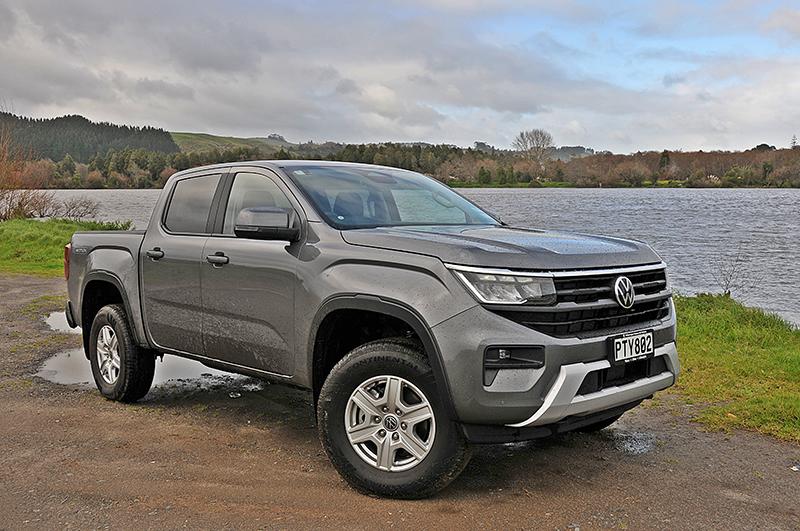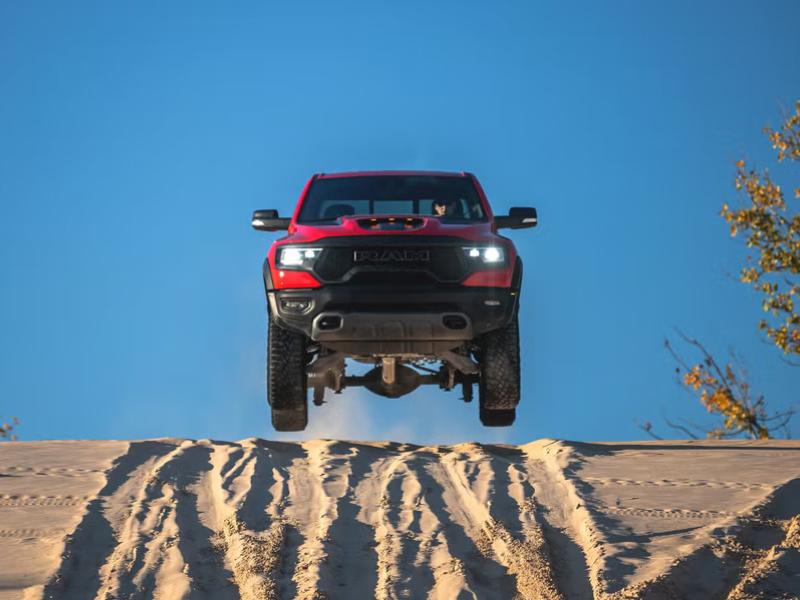VW’s new Amarok is among us. NZ4WD was at the launch, covered the range last month, and will be taking a closer look at each model over the next few months, beginning with the Amarok Life.
Volkswagen’s Amarok rocked the New Zealand 4WD market when it arrived. A sumptuous interior, a mountain of torque, clever 4WD using Torsen diff technology and – gasp – no low range! Old school 4WD types found that last item hard to swallow, but the Amarok simply used its electronic driver aid systems and that massive torque to do what was required of it.
The name Amarok references a wolf deity in Inuit mythology. The original certainly lived up to the character of its ‘spirit animal’. At the time, there was arguably no diesel double cab ute better suited for towing toys or caravans. The Amarok found a willing market among businesses and tradies, who appreciated the new arrival’s hard-working abilities and the sophisticated interior. That well-worn, abused phrase ‘car-like’ was seldom as accurate.
It’s been a fair success for VW: between 2010 and 2022, 830,000 units of the first-generation Amarok were sold.
Time has moved on, and so has VW’s 4WD ute.
The second-generation Amarok first broke cover internationally last year, and it arrived here mid-year 2023.
Designed and conceived in Germany and Australia, it is built at the Silverton assembly plant in South Africa.
Platform-sharing is embedded in automotive manufacture these days. It’s hard to think of a case where this has gone wrong for either partner.
Isuzu’s D-Max and the Mazda BT-50 share underpinnings, the next Mitsubishi Triton platform-shares with the next Nissan Navara, and VW’s current partnership with Ford is pretty well known. That means this Amarok shares the new Ford Ranger’s platform as part of the 2019 Ford-VW global co-operation agreement.
Internationally, a four-door double cab and two-door single cab body styles are available in this generation. New Zealanders, given a choice, will opt for the double-cab.
The new vehicle is 96mm (3.8in) longer than its predecessor, with a 173mm (6.8in) longer wheelbase which provides more interior room and stability.
Fording depth is increased from 500mm (19.7in) to 800mm (31.5in).
The 2023 Volkswagen Amarok LIFE has a 235mm ground clearance with a 3500kg braked and 750kg unbraked towing capacity.
During its introduction, the second-generation Amarok was introduced with five variants. The base version is the ‘Amarok’, followed by the ‘Life’ and ‘Style’. Two flagship variants are offered: the PanAmericana (with an off-road-inspired styling) and Aventura (with an on-road-oriented styling).
New Zealand takes the upper four models, making our on-test Life the entry-point of the range. Once, being entry-level meant poverty-pack specification. Not so long ago it was the buy-in point for government department fleets: wind-up windows, vinyl seats, steel wheels and awful ‘light truck’ tyres. Not any more.
VW has created a ‘brand ladder’, giving the Life a strong base spec and considerable offroad ability, then layering on extras as the range goes onward and upward.
So there are very smart 17-inch alloy wheels with enormous 70-section Continental tyres; there’s a rear mechanical diff lock, LED headlights, fog lights, heated exterior mirrors, multifunction leather steering wheel and a 12-inch infotainment touchscreen.
Safety kicks off with a five-star ANCAP rating.
So, the back story. Amarok Life; an apt name for the entry level Volkswagen double cab utility, but there is much more to this ute than a good name.
Part of the generation II Amarok ethos is to deliver as much value for money as possible from the earliest possible opportunity, which means the Life is bristling with Amarok features which sets the standard for the utes which come after it.
The three utes sitting above the Life then, carry everything the Life has and gradually improve the further up the product ladder you climb.
Amarok Life is the only Amarok with a six-speed automatic transmission which is well matched with its modest 125kW of power at 3,500 peak rpm and 405Nm between 1,750 and 2,500 rpm.
This comes from the Life’s 2.0-litre four-cylinder turbo diesel which has a factory fuel consumption figure of 9.2 litres per 100km for 242gm/km CO2. That puts it into Clean Car fee territory – $5,865 worth.
Fuel economy: we hit the official 7.2 litres/100km but sneaked back up to around 8.0 in rainy day mixed-surface driving. We were labouring under the lead foot of a previous driver who’d hammered to overall figure up over 9.2 litres per 100km.
The 5.362m long, 1.871m high Amarok Life sits on 17-inch alloys with 255/70/17-inch rubber and carries a steel wheel as its spare.
The Amarok Life’s GVM of 3230kg and tare weight of 2286kg give a 944kg payload and a towing capacity of 3500kg braked with a downward tow-ball load of 350kg.
In terms of its design, the Amarok’s most significant feature is in the nose. This is where everyone was expecting Volkswagen’s ute to lose some of its identity, but in fact, the opposite is true.
With its slimline LED lights, the Life hints at a level of refinement inherent in the new Amarok design and that’s a level of sophistication which also applies to the Life’s ‘entry level’ specification list.
This includes an extremely comprehensive range of safety features, including adaptive cruise control, forward collision warning front assist with autonomous emergency braking, lane keep assist, junction assist, blind spot monitoring and rear cross traffic alert, rear view camera, tyre pressure monitoring, speed sign recognition, front and rear park distance control, multi collision mitigation braking and the anticipated airbags, ESP, ABS and brake booster system. All of which delivers a range wide five-Star ANCAP safety rating.
Inside, the Amarok Life starts the specification tree with wireless phone charging, app connect with Mirrorlink, a six-speaker audio system controlled via the vertical 12-inch touchscreen, which matches the lateral 12.3-inch instrument cluster display.
Life also features a leather multifunction steering wheel but is the only variant to feature cloth trim for the manually adjusted seats.
Driving south into the Waikato, we drove head-first into massive monsoon-style rain storms. Perfect. Not perfect for photography, but an excellent chance to feel how the Life coped with rapidly changing grip levels on twisty rural tarmac, and how it worked on sketchy gravel and muddy tracks alongside a flood-swollen WaIkato.
Those massive Continental tyres have the biggest sidewalls we’ve experienced all year, which has a positive effect on ride quality. Their very urban-style tread pattern was surprisingly good on the muddiest of tracks.
The combination of wheel, tyre and suspension endowed the Life with ride and handling the equal of many more expensive offerings. That engine and six speed auto are such a good pairing that we begin to question the need for eight or ten-speed transmissions.
When engineers spend time marrying engine and trans, mindful of the vehicle’s likely se, the result is very good indeed.
Capability is undeniable. Life operates in ‘2H’ on the road, a simple rotary dial on the console enabling the switch to 4H on loose surfaces, a further turn giving 4L to maximise torque at very low speeds. Also handy for low-speed manoeuvring such as parking a boat or caravan in a confined space.
Still having grip issues? Engage the rear diff lock and drive on out.
In 4WD 4L, the diff lock can be used at any speed; in other drive settings it’s speed limited to 40km/h.
Rain had drowned some of our favourite tracks alongside the river, and worse was certainly coming, but the Continentals never clogged or spun up. We would of course be switching to something more aggressive for serious offroad work, but the Contis were simply impressive on our mixed-surface drive.
The chassis is communicative, giving feedback as one wheel or another struck slimy grass clumps of pools of deep mud.
The wellside tray is capacious and well equipped with tie-down rings, but we’d be adding a tray protector quicksmart – and possibly topping it off with a quality canopy.







